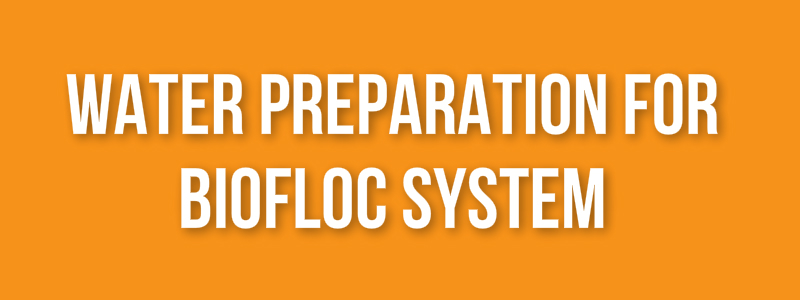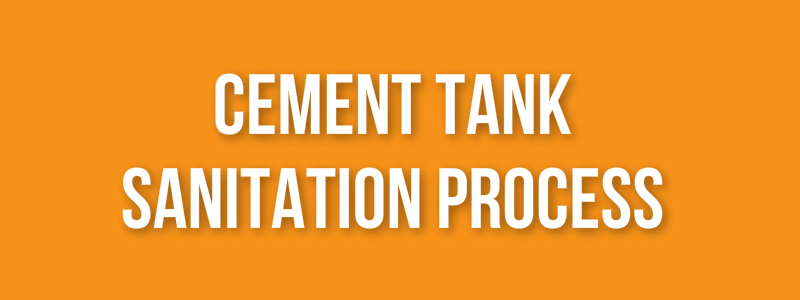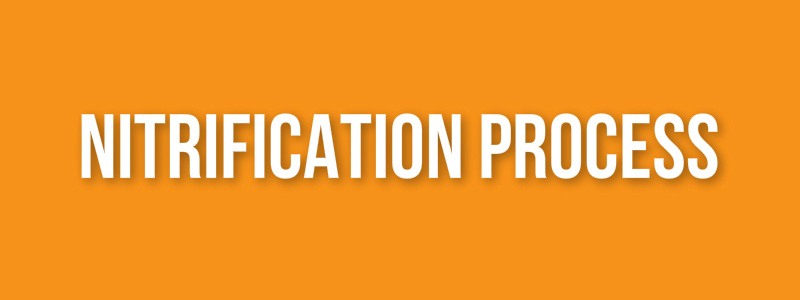Water Preparation for BIOFloc Fish Farming

Let’s discuss Water Preparation For BIOFloc Fish Farming process in a scientific way. The details of the how-to prepare Water for BIOFloc Fish Farming is mention in a step-by-step manner to make you understand better. And you can follow this guideline while preparing your own Water Preparation For BIOFloc.
Step1 (Tank Hygiene): Prior to adding water into the tank, it should be properly sanitized. Use Potassium Permanganate i.e KMNO4 (Antifungal Agent) solution to wash the tank and leave it for 24 hours and clean it. This solution helps to kill all the unwanted bacterias in the tank.
Step2 (Water Quality Analysis): Check the water parameter to ensure it suits the BIOFloc environment. If you are planning for a commercial scale, then water must be checked in laboratories. It will be good if the water has negligible or zero Pathogens (which may destroy BIOFlocs). It’s better to get your water checked for IRON, Chlorine, Hardness, etc. These are very basic tests even you can do it and all the test kits are available online.
- IRON Test Kit –> click here
- Chlorine Test Kit –> click here
- Hardness Test Kit –> click here
The salinity of Water: It’s a crucial component of the BIOFloc system. The salinity of water depends upon the type of fish you want to cultivate. Every aquatic animal has a different salinity level, so you need to check which type of fish/shrimp you want to grow accordingly maintain the salinity level of the water. Salinity Meter (Refractometer) helps to measure the salinity of the water i.e. salt content in the water.
The study suggests that rohu fingerlings can be reared in coastal water with a salinity of up to 6% with 100% survival rate.
Total Dissolved Solids (TDS) in Water: According to World Health Organization, TDS level less than 300 mg/liter is considered as excellent, between 300 and 600 mg/liter is good, 600-900 is fair, 900 – 1200 is poor and TDS level more than 1200 mg/liter is unacceptable. TDS Meter helps to measure the TDS Levels of the water, it not only measures the salt but also measures other dissolved solids. But in BIOFloc usually, the role of TDS is ignored.
PH Monitoring: It helps to understand the acidic or alkalinity of the water. Leave the water tank in aeration for 24 hours and measure the PH. If the PH value differs or it’s below the required PH level, then you must add Calcium Carbonate (CaCO3) to maintain the required pH level of water. Basically CaCO3 never dissolves in clean water, it only dissolves where it finds the acidic nature of the water. The CaCO3 doses will be 0.05 gram per liter. Basically it helps to stabilize the PH Level in Water.
Optimum Aeration: The tank water must be aerated for 48 hours, it helps to oxidise the water and evaporates unnecessary chemicals from the water. The Dissolved Oxygen (DO) level should be within the range of 5-6. DO level below 4 or above 7 can create stress level for the fishes. Dissolved Oxygen (DO) can be monitored using DO Meter or DO Test Kit. DO Meter is bit costly compared to DO Test Kit.
Role of CaCO3: Calcium Carbonate basically helps to maintain the PH Level. You need to add CaCO3 if the PH value is fluctuating or below 5. Basically we add CaCO3 before adding Probiotics. Calcium Carbonate (CaCO3) doesn’t react with pure water but, it does react with carbonic acid that is water with dissolved carbon dioxide, to produce soluble calcium bicarbonate. Add CaCO3 in the night for better results.
Required Quantity → 0.05gm/L
1000L → 50gm | 5000L → 250gm | 10000L → 500gm
Molasses and Probiotics: When all the above condition satisfies, you need to add Molasses and Probiotics in the water. This is standard equation you need to follow;
Molasses / Jaggery (0.1 gm/L) + Probiotics ( 100b cfu = 0.04 gm/L)
For Optimum Results (Jaggery) – 0.1 gm/L
- 1000 L 100 gm
- 5000 L 500 gm
- 10000 L 1000 gm (1 Kg)
For Optimum Results (Probiotics) – 0.04 gm/L
- 1000 L 40 gm
- 5000 L 200 gm
- 10000 L 400 gm
Ensure the Probiotics that you use, should be 100 billion CFU. The temperature of the water should be maintained at 26-30 degree for better growth of the bacteria. You need to maintain the required PH and temperature. And the water must be in good aeration for optimum growth.
Take a bucket of water from the BioFloc Tank, mix Jaggery and Probiotics. Uniformly put this mix in the BioFloc Tank.
Ensure the BIOFloc Tank is well aerated and it will take up to 7 days to develop the floc in the tank.
Role of Sea Salt: At the initial stage no need to add Sea Salts, it might hamper the initial bacterial growth.
When you add salt at the initial stage, it slows down the floc development process and sometimes floc don’t grow. Salt doesn’t kill the bacteria but it slows down the process. Salt will be added into the system when the floc is fully developed and depending upon the fish you want to cultivate. Because salinity differs fish to fish. Check the optimum required salinity of the fish that you want to cultivate.
Optimum Quantity of Sea Salt 1 gm/L
- 1000 L 1000 gm (1 Kg)
- 5000 L 5000 gm (5 Kg)
- 10000 L 10000 gm (10 Kg)
Step3 (Fish Introduction): Now the BIOFloc Tank Water is ready to use. Before you introduce nursery fishes into the tank, it’s recommended to sanitize the fishes, so that harmful bacteria will not get introduced to the BIOFloc tank.





